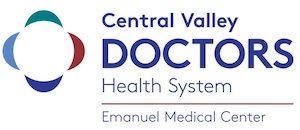New Program at Emanuel Medical Center Focuses on Patients Battling Substance Use Disorders
Apr 28, 2023Turlock, Calif. – Emanuel Medical Center has received a grant from the California Bridge Program (CA Bridge) to place substance use navigators in its emergency department to help patients battling substance use disorders.
Substance use navigators (SUN) are a vital part of successful treatment for substance use disorders, working both in the hospital and the community to connect people to treatment. SUNs make a measurable impact for patients presenting in the emergency department by:
- Streamlining care for people who use drugs
- Reducing the number of substance use disorder-related hospital readmissions
- Improving provider satisfaction caring for patients who use drugs
- Saving lives through facilitating interventions focused on harm-reduction interventions
According to the National Institute on Drug Abuse, there were 106,699 drug-involved overdose deaths reported in the United States in 2021. Synthetic opioids other than methadone (primarily fentanyl) were the main driver of drug overdose deaths with a nearly 7.5-fold increase from 2015 to 2021.
“We are so pleased to implement this program in our emergency department. Our navigators are helping people avoid additional harms of substance use and helping them engage in treatment that works for them,” said Murali Naidu, MD, CEO of Emanuel Medical Center. “When patients come to our facility struggling with substance use, our navigators can transform a patient’s visit into a positive, life-changing moment. They are true advocates for patients with substance use disorders.”
Here’s how the navigator program works:
- Patient Identification – The on-site provider team rapidly identifies patients suffering from a substance use disorder as the patient arrives in the emergency department. They provide same-day treatment in response to the patient’s needs.
- Community Connection – The SUN connects with the patient prior to hospital discharge and connects them with the appropriate community-based services to support their journey such as financial counseling, primary care, mental health services, social services, and residential treatment facilities.
- Patient Follow-Up – 1-2 days post discharge, the SUN follows up with the patient by phone and ensures the patient has connected with their needed services.
SUNs enhance access to around-the-clock treatment for patients. This model allows the navigators to be the frontline for initiating treatment. The best outcomes occur when patients start and are retained in long-term recovery treatment with medications. When patients in opioid withdrawal come seeking medical care, including for reasons not related to opioid use, they will be offered medication, such as buprenorphine, to ease severe symptoms of withdrawal and begin maintenance treatment. They will then be connected with treatment resources within the community.
Substance use disorders are a chronic medical condition that can be treated with medication for addiction treatment (MAT). MAT medications – buprenorphine, methadone and naltrexone – are FDA approved. Emergency departments are an open door to start patients on MAT because they are open every day around the clock, provide access regardless of insurance status, and are frequently used by people experiencing addiction.
Studies have shown that initiating treatment and providing medication designed for addiction treatment are more likely to result in patients remaining in care and having better long-term outcomes than those who are given referral information alone.
Emanuel Medical Center’s local sister hospitals, Doctors Medical Center in Modesto and Doctors Hospital of Manteca, also have substance use navigators in place within their emergency departments.

